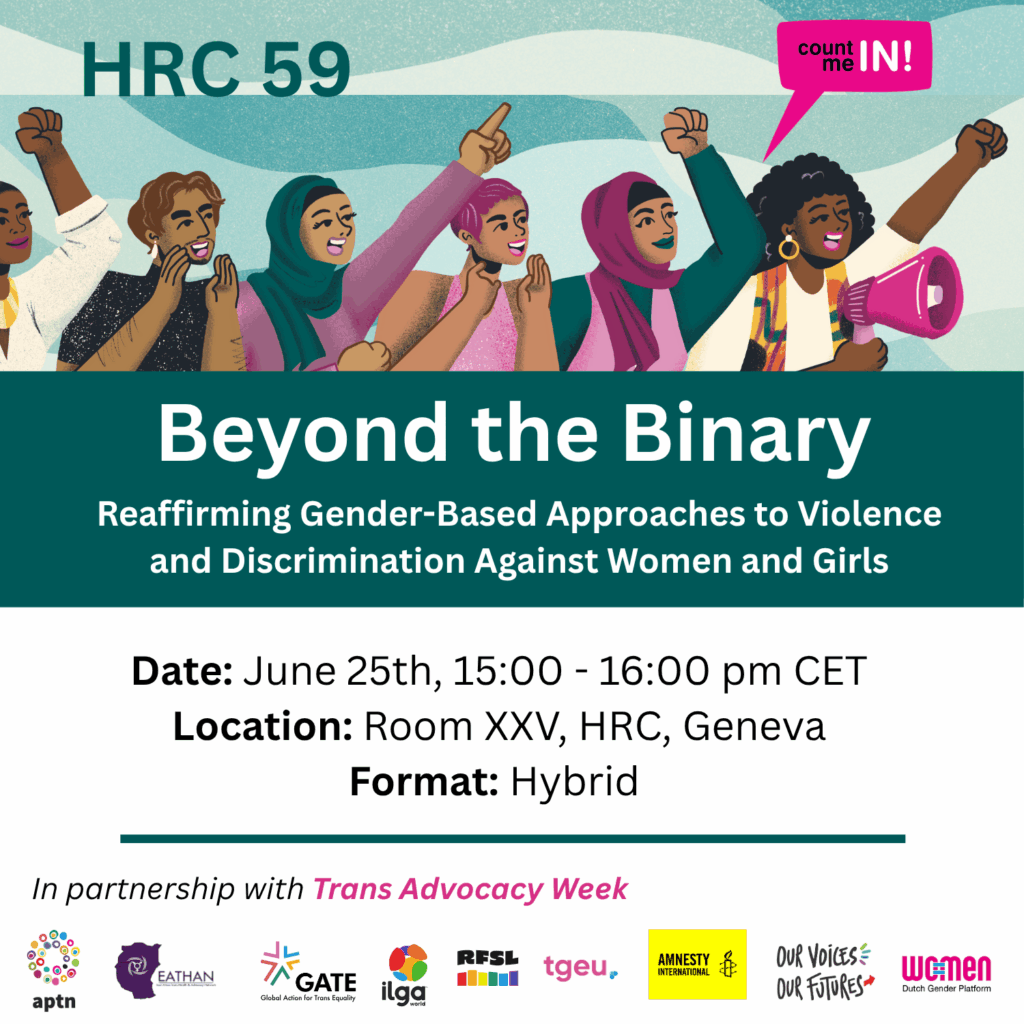During this year’s Human Rights Council, CMI! and allies will highlight the importance of gender-based approaches to addressing violence and discrimination against women and girls and advance intersectional frameworks that recognise how gender-based violence is shaped by multiple, overlapping systems of power, instead of biology, alone.


The framework of “sex-based violence” poses a threat to well-established human rights protections for marginalised groups and undermines efforts to address the root causes of gender-based violence. It contradicts established principles of international law and breaches the doctrine of non-retrogression, which prohibits actions that deliberately roll back existing rights.
This framework is inconsistent with both human rights law and scientific evidence. It rests on the incorrect assumption that biological sex is a fixed, binary, and universally applicable category on which rights frameworks can be reliably built. Biological sex characteristics, as recognized by WHO and other bodies, exist along a spectrum. Scientific evidence demonstrates that sex characteristics exist on a spectrum, reflecting a wide range of anatomical and chromosomal diversity. Framing sex as binary oversimplifies human diversity, reinforces outdated, biologically essentialist perspectives and erases the realities of many individuals, especially intersex, transgender, and gender-diverse people.
In contrast, the term “gender” more accurately captures the nature of rights violations that arise from socially constructed roles and expectations assigned to individuals based on perceived sex. A gender-based analytical framework has been central to the development of more inclusive and progressive human rights policies as it addresses how power relations and social roles, rather than biology alone, shape access to rights and protections.
A gender-based violence (GBV) framework is foundational to the realization of international human rights standards and the fulfillment of commitments under core UN instruments, including the Convention on the Elimination of All Forms of Discrimination against Women (CEDAW), the Beijing Declaration and Platform for Action, and the 2030 Agenda for Sustainable Development. This framework recognizes that violence is not experienced in a vacuum but is shaped by unequal power relations, discriminatory gender norms, and institutionalized systems of inequality. By focusing on gender—as a socially constructed system of roles, expectations, and hierarchies—GBV frameworks enable policymakers and duty bearers to address the root causes of violence, rather than merely its symptoms. They also ensure that responses to violence are comprehensive, inclusive, and aligned with the lived realities of all women and girls, in their diversity.